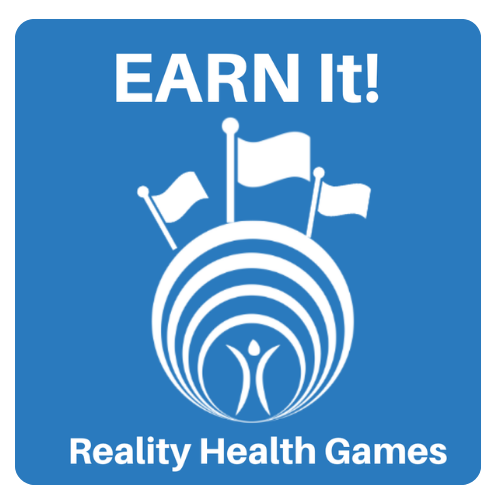Healthy Start: Pregnancy 101
-
Before we started...
Initial Appointment Checklist12 Topics-
Welcome
-
Research Ob in your area (OB, PA< Midwife, etc.)
-
Make Appointment with Provider of Choice
-
Confirm Pregnancy with Provider
-
Stop alcohol, smoking or illicit drug use
-
Talk to doctor about past history
-
Continue to exercise
-
Start Prenatal Vitamin
-
Vital Signs Checked
-
pelvic Exam and Pap Smear
-
Blood Draw
-
Schedule blood draw
-
Welcome
-
First TrimesterInitial Checklist Before First Appointment9 Topics
-
Pap Smear
-
Discuss Labor Plans
-
Knowing your risk factors
-
Continue with prenatal vitamin
-
Monitor Weight & Discuss with provider
-
Continue Exercise and drink plenty of water
-
Between 11th and 13th week, discuss genetic test imaging with provider
-
Between 11th and 13th week, fetal heart tones
-
Discuss Risk Factors with Provider for use of aspirin
-
Pap Smear
-
1.1 Adapting to the First Trimester
-
1.2 Your 1st Trimester Changes
-
1.3 Common Questions 1
-
1.4 Common Questions 2
-
1.5 What is Domestic Abuse?
-
Healthy Habits2.1 Healthy Eating Habits
-
2.2 Nutrition during Pregnancy
-
2.3 Planning your Exercise Routine
-
2.4 How Smoking Affect Pregnancy
-
2.5 Quit Smoking during Pregnancy
-
2.6 Sex and Pregnancy - During
-
2.7 Skincare during Pregnancy
-
Prenatal Visits, Tests and More3.1 Pre-Natal Care
-
3.2 Your Weight
-
3.3 Gestational Diabetes
-
3.4 Kicks Count
-
3.5 Placenta Previa
-
3.6 Preclampsia
-
3.7 Anemia
-
3.8 Blood Glucose
-
3.9 RH Negative Screening
-
2nd Trimester and Body Changes4.0 Second Trimester Checklist10 Topics
-
Weight & Blood pressure Check
-
Fetal Heart, height and weight
-
Prep list of items needed for self, family and new baby
-
Preparation for list of items for baby shower or other sources
-
Securing a breast pump - Buy, use insurance and other sources
-
Continue Weight Monitoring
-
16th Week - Follow up with Provider on Genetic Testing, if indicated
-
By week 24, ultrasound - Boy or Girl, if you want to know?
-
Week 24 - Talk to provider about potential challenges and concerns
-
Weeks 24 - 28 - Gestational Diabetes Screening
-
Weight & Blood pressure Check
-
4.1 Adapting to 2nd Trimester
-
4.2 Your Second Trimester Changes
-
4.3 Back Pain during Pregnancy
-
4.4 Body Changes During Pregnancy
-
3rd Trimester, Comfort Tips and Relieving Back PainThird Trimester Checklist12 Topics
-
Weight and Blood Pressure and Follow-up appointments, if needed
-
Fetal Heart beat and fundal height measurement
-
Discussion with Provider about labor plan (admissions, preparations, etc.)
-
Discuss Childbirth Education with Provider
-
Baby Shower and partner support activation
-
Packing a Bag for Delivery Day
-
Make sure car seat is ready and available
-
28th week - Receive TDAP vaccine
-
28th Week - RH Check
-
28th - 32th Week - Continue Bloodwork for Syphilis and HIV
-
Between 35-37th week: Group B Streptococcal Check
-
39th Week - Disuss Labor Induction and Expectations
-
Weight and Blood Pressure and Follow-up appointments, if needed
-
5.1 Adapting to 3rd Trimester
-
5.2 Your Third Trimester Changes
-
5.3 Comfort Tips
-
5.4 Relieving Back Pain during Pregnancy - Moving Safely
-
5.5 Relieving Back Pain during Pregnancy - Pelvic Tilt and leg lift
-
5.6 Relieving Back Pain during Pregnancy - Positioning Yourself
-
5.7 Relieving Back Pain during Pregnancy - Tailor Sit and Trunk Turn
-
5.8 Relieving Back Pain during Pregnancy - Wall Stretch & Body Bend
-
Infant Nutrition and Care6.1 Labor and Childbirth - Thinking about a Birth Plan
-
6.2 Labor and Childbirth - Support Person Notes
-
6.3 Vaginal Birth
-
6.4 Vaginal Birth after Cesarian
-
6.5 Breech Presentation
-
6.6 Cesarean Birth
-
6.7 - Before Cesarean Birth
-
6.8 Pre-Term Labor
-
6.9 Labor and Childbirth - Your Body Prepares
-
6.10 Recognizing Labor
-
6.11 Preparing for the Hospital
-
6.12 - Stages of Labor
-
6.13 Induction of Labor
-
6.14 Anesthesia Options
-
6.15 Labor and Childbirth - Without Medication
-
6.16 Labor and Childbirth - Immediately After Birth
-
6.17 Preparing to Go Home
-
6.18 Understanding Post Partem Depression
-
Labor, Birth and Aftercare7.1 Infant Nutrition and Care
-
7.2 Caring for Yourself
-
7.3 Anatomy and Breastfeeding
-
7.4 Benefits to Breastfeeding
-
7.5 Breastfeeding - Common Questions
-
7.6 Holds for Breastfeeding
-
7.7 Nutrition While Breastfeeding
-
7.8 Breastmilk - Expressing
-
7.9 Breastmilk - Storing
-
7.10 How to Bottlefeed
-
7.11 Circumsion Care
-
7.12 How to Diaper
-
7.13 Bathing Newborn
-
7.14 Laying Baby Down to Sleep
-
7.15 When to Call the Doctor
-
7.16 Umbilical Cord Care
-
7.17 Signs of Jaundice
-
Infant Safety8.1 Infant Safety
-
8.2 Choosing a Carseat
-
8.3 Car Seat Installation
-
8.4 Car Safety for Newborns
-
8.5 Car Seat Safety Checklist
6.9 Labor and Childbirth – Your Body Prepares
Your body starts preparing for labor and childbirth long before your baby is born. In the weeks and days leading up to labor, your body undergoes many changes to get ready for the big event.
Some of these changes may be uncomfortable, but they are all part of the natural process of bringing new life into the world. Here’s a look at some of the things that happen to your body as you prepare for labor and childbirth.
Your cervix softens and begins to open:
In the weeks before labor, your cervix — the opening to your uterus — begins to soften and thin out (efface). This process is called ripening.
As your cervix ripens, it begins to open (dilate). By the time you go into labor, your cervix will be fully dilated and ready for your baby to pass through.
Your uterus contracts:
As labor approaches, your uterus will begin to contract. These contractions are usually irregular at first and may feel like menstrual cramps or backaches.
As labor progresses, the contractions will become more intense and regular. They will peak in intensity during transition — the final stage of labor just before pushing when your baby is almost born.
Your water breaks:
For most women, labor begins when their water breaks. This happens when the sac of fluid that surrounds your baby — called the amniotic sac — ruptures.
Your water may break with a gush of fluid or a trickle. It may even leak out slowly over time. If your water breaks before labor begins, you will likely be induced.
If you’re not sure whether your water has broken, contact your healthcare provider. He or she can check to see if your amniotic sac has ruptured.
Your body releases hormones:
During labor, your body releases hormones that help to make the birthing process possible. These hormones cause your uterine muscles to contract and also help your cervix to dilate.
One of the most important labor hormones is oxytocin. This hormone is responsible for the strong, regular contractions that help to push your baby through the birth canal during labor.
Your body also releases endorphins during labor. These natural painkillers help to take the edge off of the discomfort of childbirth.
As you can see, your body goes through a lot of changes as you prepare for labor and childbirth. These changes are all part of the natural process of bringing new life into the world.
So, even though they may be uncomfortable at times, try to remember that they are ultimately helping you to achieve the amazing feat of childbirth.






